Thejaswi Muniyappa
Dual-Attention Neural Transducers for Efficient Wake Word Spotting in Speech Recognition
Apr 05, 2023



Abstract:We present dual-attention neural biasing, an architecture designed to boost Wake Words (WW) recognition and improve inference time latency on speech recognition tasks. This architecture enables a dynamic switch for its runtime compute paths by exploiting WW spotting to select which branch of its attention networks to execute for an input audio frame. With this approach, we effectively improve WW spotting accuracy while saving runtime compute cost as defined by floating point operations (FLOPs). Using an in-house de-identified dataset, we demonstrate that the proposed dual-attention network can reduce the compute cost by $90\%$ for WW audio frames, with only $1\%$ increase in the number of parameters. This architecture improves WW F1 score by $16\%$ relative and improves generic rare word error rate by $3\%$ relative compared to the baselines.
Dialog act guided contextual adapter for personalized speech recognition
Mar 31, 2023
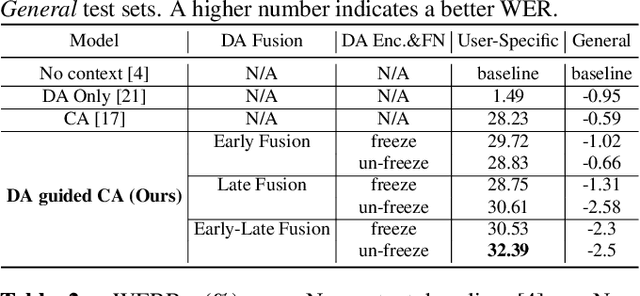
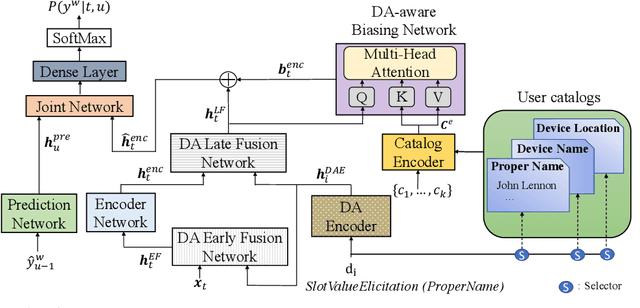
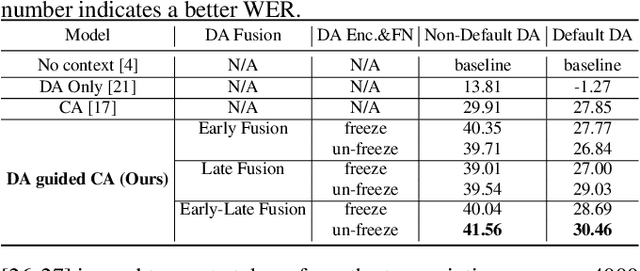
Abstract:Personalization in multi-turn dialogs has been a long standing challenge for end-to-end automatic speech recognition (E2E ASR) models. Recent work on contextual adapters has tackled rare word recognition using user catalogs. This adaptation, however, does not incorporate an important cue, the dialog act, which is available in a multi-turn dialog scenario. In this work, we propose a dialog act guided contextual adapter network. Specifically, it leverages dialog acts to select the most relevant user catalogs and creates queries based on both -- the audio as well as the semantic relationship between the carrier phrase and user catalogs to better guide the contextual biasing. On industrial voice assistant datasets, our model outperforms both the baselines - dialog act encoder-only model, and the contextual adaptation, leading to the most improvement over the no-context model: 58% average relative word error rate reduction (WERR) in the multi-turn dialog scenario, in comparison to the prior-art contextual adapter, which has achieved 39% WERR over the no-context model.
Contextual Adapters for Personalized Speech Recognition in Neural Transducers
May 26, 2022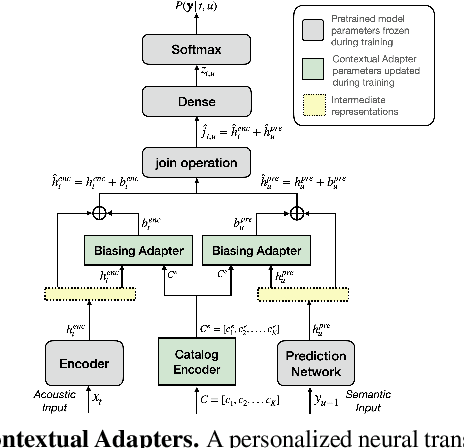

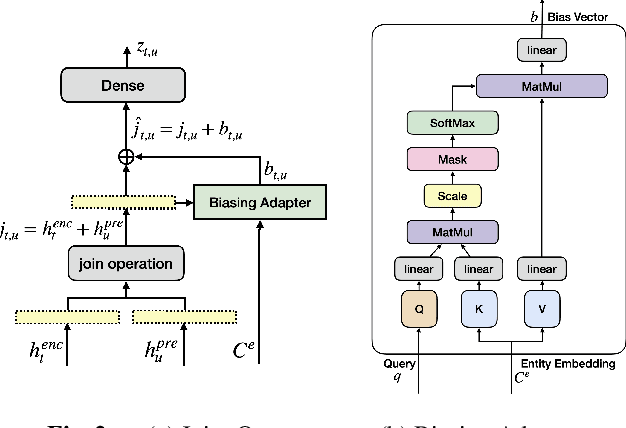
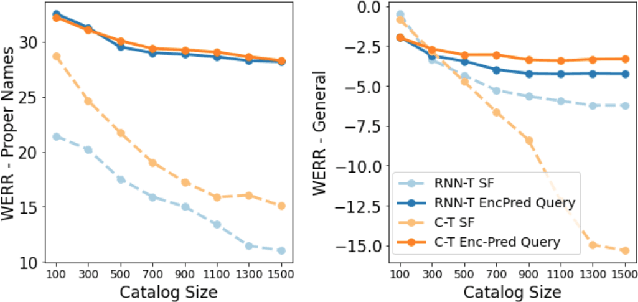
Abstract:Personal rare word recognition in end-to-end Automatic Speech Recognition (E2E ASR) models is a challenge due to the lack of training data. A standard way to address this issue is with shallow fusion methods at inference time. However, due to their dependence on external language models and the deterministic approach to weight boosting, their performance is limited. In this paper, we propose training neural contextual adapters for personalization in neural transducer based ASR models. Our approach can not only bias towards user-defined words, but also has the flexibility to work with pretrained ASR models. Using an in-house dataset, we demonstrate that contextual adapters can be applied to any general purpose pretrained ASR model to improve personalization. Our method outperforms shallow fusion, while retaining functionality of the pretrained models by not altering any of the model weights. We further show that the adapter style training is superior to full-fine-tuning of the ASR models on datasets with user-defined content.
Attentive Contextual Carryover for Multi-Turn End-to-End Spoken Language Understanding
Dec 13, 2021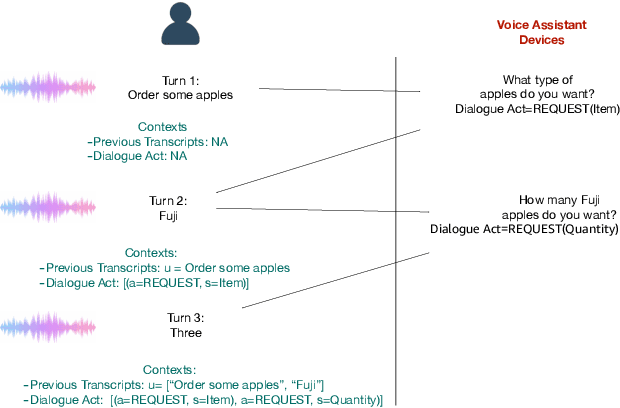
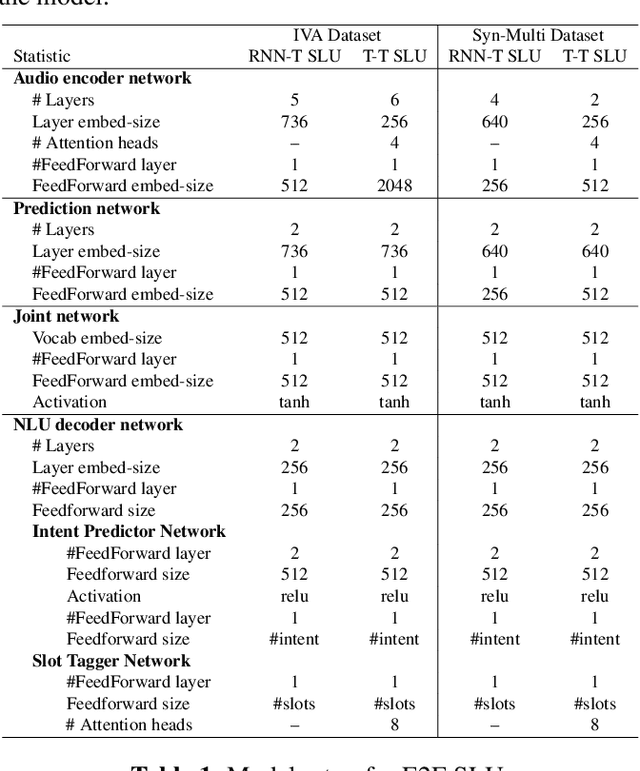
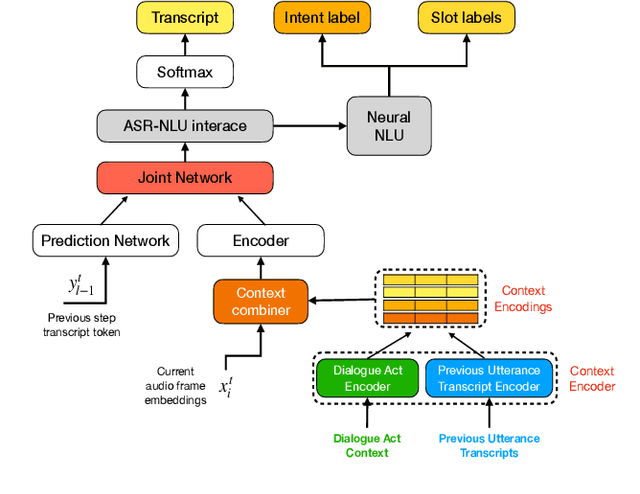
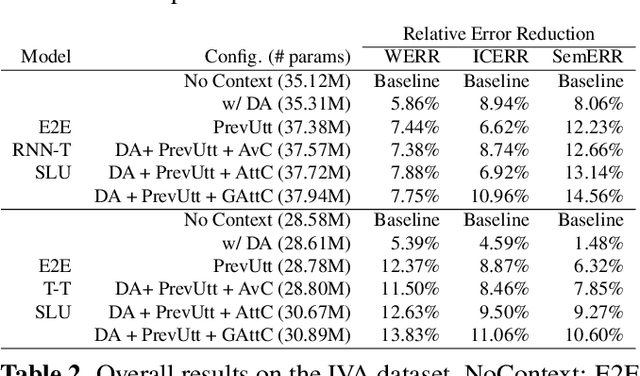
Abstract:Recent years have seen significant advances in end-to-end (E2E) spoken language understanding (SLU) systems, which directly predict intents and slots from spoken audio. While dialogue history has been exploited to improve conventional text-based natural language understanding systems, current E2E SLU approaches have not yet incorporated such critical contextual signals in multi-turn and task-oriented dialogues. In this work, we propose a contextual E2E SLU model architecture that uses a multi-head attention mechanism over encoded previous utterances and dialogue acts (actions taken by the voice assistant) of a multi-turn dialogue. We detail alternative methods to integrate these contexts into the state-ofthe-art recurrent and transformer-based models. When applied to a large de-identified dataset of utterances collected by a voice assistant, our method reduces average word and semantic error rates by 10.8% and 12.6%, respectively. We also present results on a publicly available dataset and show that our method significantly improves performance over a noncontextual baseline
 Add to Chrome
Add to Chrome Add to Firefox
Add to Firefox Add to Edge
Add to Edge